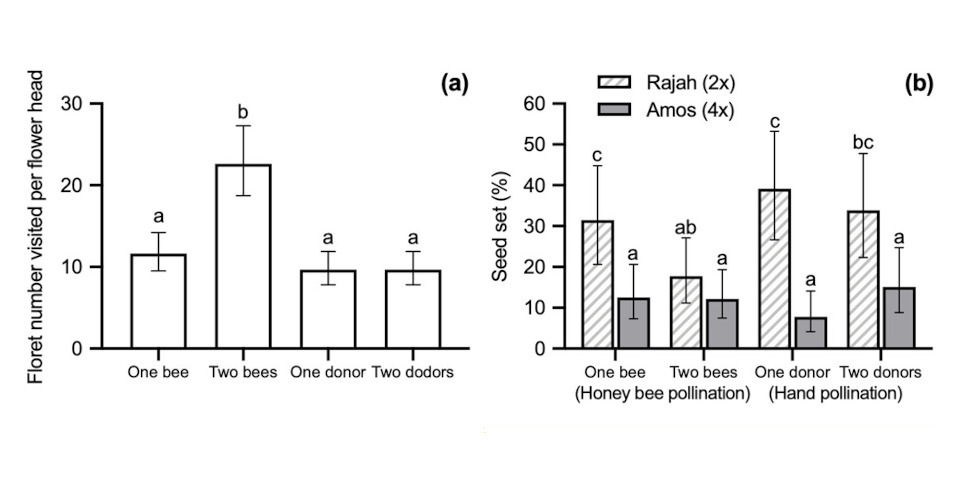In red clover seed production, low seed yield is limiting the commercial exploitation of tetraploid red clover. To explore if pollination is the limiting factor for the seed yield in tetraploid red clover, we investigated pollinator behaviour and plant reproductive success in diploid (2x) cultivar ‘Rajah’ and tetraploid (4x) cultivar ‘Amos’ using honey bee and hand pollination approaches. We measured the seed set at the flower head level with the increasing visitation rate of honey bees (one bee, two bees and open pollination) and pollen diversity (one and two pollen donors) of hand pollination. We found no difference in honey bee pollination behaviour (visitation rate) between the diploid and tetraploid red clover. Surprisingly, the seed set in two bees was significantly lower than that of one bee in ‘Rajah’. We suggest that honey bees prefer to visit already tripped florets or to visit fewer florets due to scent marks left by the previous honey bees. In open pollination, seed number per flower head in ‘Amos’ (on average 11) was half of ‘Rajah’ (on average 20). Seed set in ‘Amos’ was lower than 50% of ‘Rajah’ in honey bee (one bee treatment) and hand pollination (one and two pollen donors treatments). There were no differences in stigma receptivity whereas pollen viability in ‘Amos’ was lower than ‘Rajah’ after the peak pollen viability was reached (six days after the onset of flowering). We suggest that the fertility problems such as low pollen viability may be the reason for the low seed set in tetraploid red clover. This conclusion should be verified by investigating other fertility traits during the ovary, embryo and seed development with a broader range of diploid and tetraploid cultivars.
2412 Members
127 Countries!
127 Countries!










